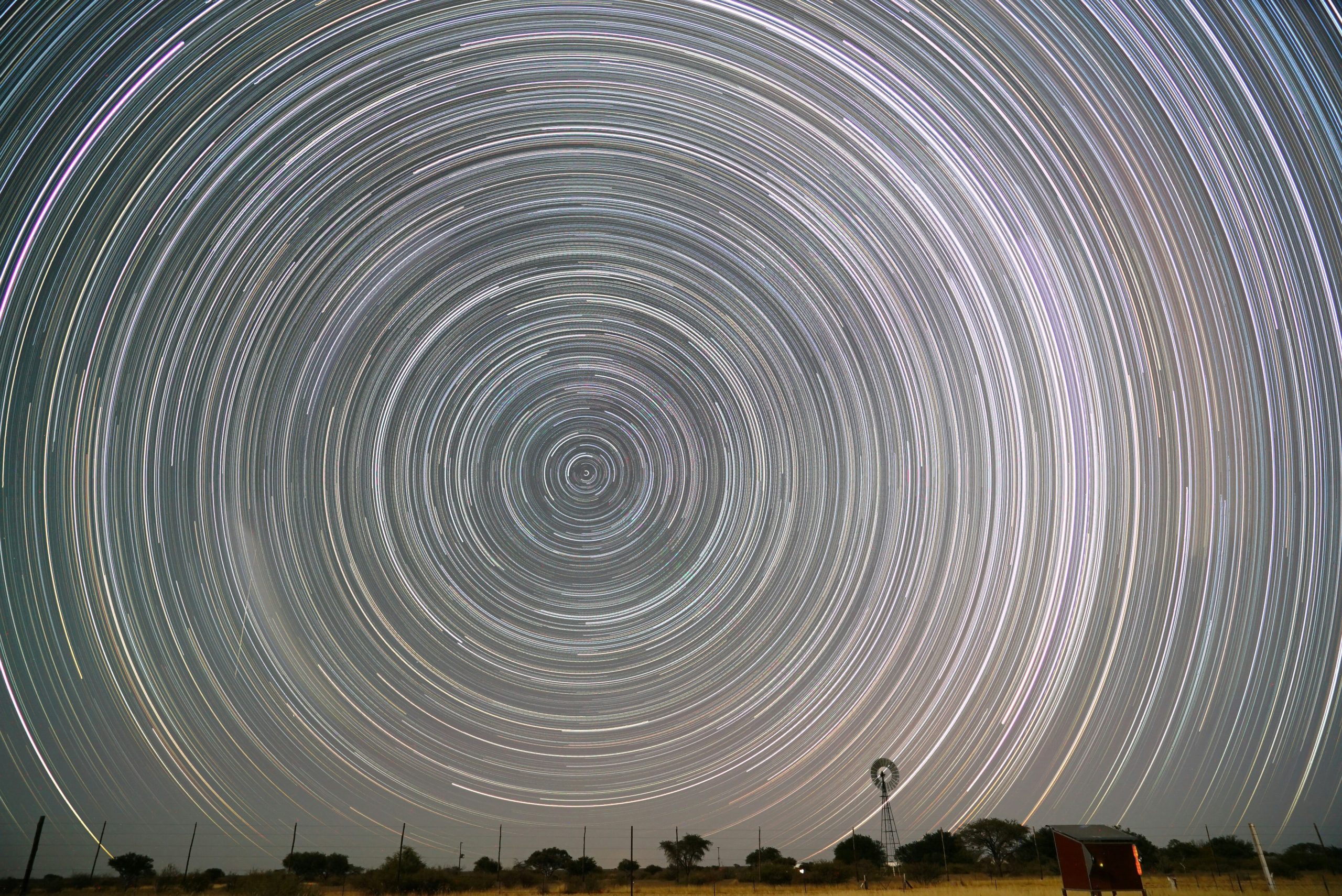The earth is slowing down. After a phase of accelerated Earth rotation, the International Earth Rotation and Reference Systems Service (IERS) expects the longest day since 2019 in 2025, according to a recent calculation. Moon, tides, Earth‘s core, winds and now humans? The complex causes of the Earth‘s rotational fluctuations are still only partially understood and are being researched worldwide.
At the end of 1974, the scientific world gazed spellbound at a wobbling Earth. An invisible force acted on the rotation of the planet and suddenly slowed down the Earth‘s mass of around six trillion tons – the days became around three milliseconds longer. Just a few days later, in the first days of January 1975, the spook repeated itself just as abruptly. The rotation accelerated again and the days shortened by around one millisecond, as the magazine “Physik unserer Zeit” reported at the time. The earth is spinning. Brakes, accelerates and wobbles. Periodically, cyclically, often seemingly spontaneously and, according to current studies, now also man-made.
Satellite navigation in the 21st century, and therefore a wealth of user applications, is dependent on the exact recording of rotational fluctuations – with geodetic space procedures in the microsecond range – and on forecasts. After all, every change in the speed of the earth‘s rotation has consequences: three milliseconds may not sound like much, but when determining positions by satellite, nowadays with a precision in the millimeter range, three milliseconds at the equator correspond to a deviation of around 150 centimeters – a fatal error if it were to go unnoticed. This is because precision is crucial for satellite navigation systems such as GPS or Galileo. Only if the earth‘s rotation can be described exactly can the coordinates on the earth‘s surface be specified with maximum accuracy. Without precise positioning and navigation, practically nothing will rotate in the 21st century.
The average duration of a 360-degree rotation of the Earth, the so-called mean sidereal day - in relation to distant stars - is currently 23 hours, 56 minutes and 4.0989 seconds. This corresponds to the nominal mean rotational speed of 465.1 meters per second determined by the IERS. A day that is related to the sun, on the other hand, is called a solar day. The latter is four minutes longer and lasts exactly 24 hours. The measure of the fluctuations in rotational speed is the change in the length of the day.
Earth‘s core and mantle
Mass displacements in the atmosphere, hydrosphere, in the icy body - and in the planet‘s core - have a significant influence on the Earth‘s rotation. The inner core, a solid sphere of iron and nickel the diameter of the Earth‘s moon, is surrounded by a liquid outer core. Researchers have long assumed that the core rotates independently of the rest of the planet. Some studies have pointed to a continuous rotation of the Earth‘s core, others to an oscillating motion. According to the studies, the slowing down of the core can influence the length of a day in the range of a thousandth of a second.
A recent publication in the scientific journal “Nature” recently provided evidence for a model in which the inner core initially rotates in one direction, then slows down, changes direction and rotates in the opposite direction - in a cycle of around 70 years. According to this, the inner core has been rotating more slowly in relation to the Earth‘s mantle since 2010, with a lengthening of the day in the millisecond range.
Moon and tides
One floor above, on the surface of the earth, the moon tugs at the oceans. The two opposing tidal mountains are constantly slowing down the speed of the Earth‘s rotation. Thus, 4.5 billion years ago, the young Earth rotated considerably faster than it does today - back then, a day measured just ten hours. The moon orbited the earth in a much narrower orbit and whipped much more powerful tides across the globe than today. The Earth‘s rotation slowed down. 400 million years ago, a day lasted around 22 hours, today it is 24, and on average the length of the day is extended by 1.8 milliseconds (ms) per century due to tidal forces. This corresponds to around 23 microseconds per year.
But the moon also tugs at the solid earth. It raises and lowers the Earth‘s surface in Europe by around 80 centimetres in the rhythm of the tides. The most important periods caused by tides on the solid Earth are 9.13 d (amplitude 0.07 ms), 13.63 d (0.15 ms), 13.66 d (0.35 ms) and 27.55 d (0.19 ms). And the sun also tugs at the earth. Admittedly only with a tidal force of 46 percent compared to our satellite. But just like the moon, it also causes a tidal bulge.
Leap second
In the age of atomic clocks, the ups and downs of the tides are disturbing. This is because, if this brake is not lifted by other effects that accelerate the Earth‘s rotation, the real solar day deviates from UTC (Coordinated Universal Time), which lasts exactly 86,400 seconds with the uniform rate of International Atomic Time (TAI). To compensate for this difference, a leap second is inserted by the IERS from time to time to keep the deviation from a 24-hour day below 0.9 seconds. Between 1972 and 2016, there were a total of 27 leap seconds - but amazingly, none for the last eight years. This is because the IERS adjusts the insertion of the leap seconds to the fluctuations due to the varying rotation speed of the Earth. For example, no leap seconds have been inserted since 2016 because the average length of the solar day has changed little since then.
Climate change
However, humans are now also changing the speed at which the Earth rotates. In a recent modeling study, scientists at ETH Zurich have shown that climate change and global warming could even have a greater impact on the planet‘s rotational speed than the moon by the end of the century. This is because the ice masses in Greenland and Antarctica are melting. The water from the polar regions is flowing into the global oceans and, above all, into the equatorial region. This mass shift slows down the speed of rotation and lengthens the day. For the first two decades of the 21st century, the experts calculated that the length of the day increased by an average of 1.33 milliseconds due to climate change. According to the study, a more pessimistic scenario - in which the polar ice caps melt significantly - results in a climate-induced lengthening of the day by 2.62 milliseconds per century.
Winds and jet stream
A development that is interrupted time and again, however. In 2022, for example, the IERS recorded the shortest day since the introduction of the atomic clock - June 29 of that year was 1.59 milliseconds shorter. And on 28 days in 2020, the length of the day was even shorter than the record value measured on July 5, 2005. Researchers still disagree on the exact causes of the Earth‘s faster rotation, but they have found some clues. Winds in particular could be linked to the processes.
It has long been known that they influence the Earth‘s rotation. For example, there is a weak oscillation of about two years due to uneven variations in zonal winds and temperatures in the tropical troposphere and stratosphere. Its amplitude varies from cycle to cycle, but is usually less than 0.10 milliseconds. The jet stream in the northern hemisphere also has an influence on the Earth‘s rotation. Whenever it becomes stronger, the angular momentum of the atmosphere increases and the angular momentum of the solid Earth decreases.
Even 50 years ago, winds were suspected of being the cause of the abrupt accelerations and decelerations in rotational speed in December 1974 and January 1975. As the magazine “Physik unserer Zeit” reported, scientists suspected at the time that changes in wind speed at an altitude of 30 kilometers could have been responsible for the surprisingly strong effects.
Since 2023, the world has been spinning more slowly again. According to the IERS, it will experience the longest day since 2019 in March 2025. Why this is the case is the subject of scientific debate and research.





